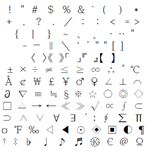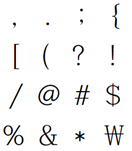Practice Notes Changes to Design Protection Act Enforcement Rules (from October 2019)
A number of changes to the Enforcement Rules of the Design Protection Act came into effect on October 1 st 2019. The main changes — which are generally in the interest of simplifying or relaxing the earlier rules — are briefly explained below:
1. Expansion of permitted addition/amendment of creator information post-registration
Previously, creator information could only be added/amended post-registration if the error being rectified was “obvious” (e.g. misspelling, duplication, incorrect transliteration of foreign name, etc.), while other amendments had to be made before a registration decision was issued for a pending design application.
Going forward, it will be easier to make additions/amendments even after registration. This change brings the relevant design provisions in line with patents and utility models, for which the equivalent enforcement rules concerning inventor information were updated in a similar manner earlier this year.
According to the new rules, where the amendment concerns an omission or “obvious” error in the creator information in the filed design application, rectification will be possible upon request. In other cases, a declaration or similar notarized document will be required from the owner and all other creators listed on the design application in order for the amendment to be reflected.
As the rights in a registered design are bestowed only upon the registered owner, an error in the creator information does not practically affect the exercise of rights. Additionally, creator permission is not necessary when disposing of a design right through assignment etc. However, there are certainly circumstances in which owners may wish to rectify the creator information post-registration, and the new rules will make this a possibility.
2. Simplified drawing classification
Traditionally, there were three types of drawing which could be submitted for a design application in Korea: (1) Basic drawings [front, rear, top, bottom, left, right and perspective views showing the overall form of the design article]; (2) Additional drawings [section views, enlarged views etc. showing specific parts of the design article]; and (3) Referential drawings [showing the design article in different states of use, etc.].
Going forward, the “additional drawings” category will no longer exist, and any section views, enlarged views etc. should instead be filed as basic drawings. This simplification should reduce the number of office actions issued due to drawing category formalities.
3. Fewer requirements for “special symbol” font designs
Font designs are protectable in Korea for Hangeul (Korean script) fonts, English alphabet fonts, numeric fonts, special symbol fonts, and Hanja (Chinese character) fonts. When a font design application is filed, there are a certain minimum number of characters/symbols which must be included. For example, an English alphabet font must include the letters A-Z in both uppercase and lowercase forms. For special symbol fonts, it was previously necessary to include a specified minimum 119 symbols, but this has now been reduced to the 16 symbols shown below:
 |
 |
| Before
(119 required symbols) |
After
(16 required symbols) |
It is, of course, possible to include other symbols in addition to the basic 16 required symbols.
The earlier requirements were said to be a burden for font creators who may not have had a need for some of the previously required symbols, which had to be submitted regardless of the intended use of the font. The relaxed requirements should encourage font creators to seek design protection.
For reference, font designs are not protected per se under copyright law in Korea, but can be protected as a computer program work if an infringer uses a copyright font file. Design protection allows for protection of the font design itself.
4. Relaxed examination criteria for products that come in pairs
Under the previous rules, when applying for design protection for an article that typically comes in a pair (e.g. shoes), if drawings were only provided for one item of the pair it was strictly necessary to include an explanation in the design description regarding the other item. Going forward, where it would be general common sense to understand that the design article is a pair even if drawings are provided for only one of the items, the examination formalities will be deemed as being met even if no specific explanation is included for the missing item.
Where it is not immediately obvious that the design article is a pair, however, an explanation must still be furnished. KIPO has provided the following text as an example: This design represents one of the earbuds comprised in a set of left/right earbuds. The other earbud in the set is symmetrical to this design.
While it is still recommendable to include an explanation when drawings for only one item in a pair are being submitted, the relaxed rules should at least mean that fewer formality objections are raised when the design subject can be easily understood as a pair.
Written by Jonathan MASTERS